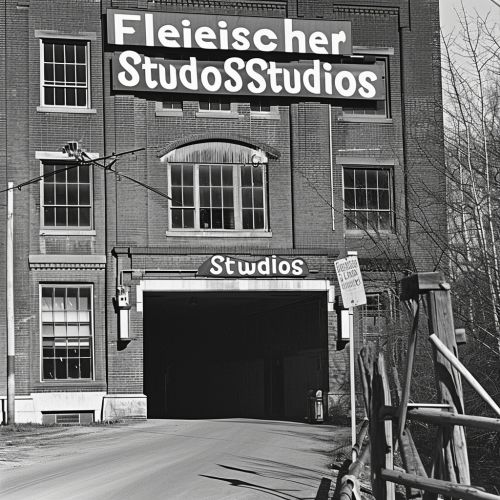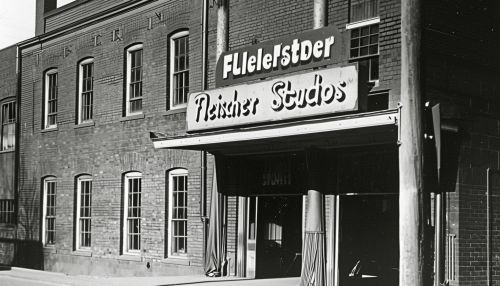Fleischer Studios
History
Fleischer Studios was an American corporation which originated as an animation studio located at 1600 Broadway, New York City, New York. It was founded in 1921 as Inkwell Studios (or Out of the Inkwell Films) by brothers Max Fleischer and Dave Fleischer who ran the pioneering company from its inception until Paramount Pictures, the studio's parent company and the distributor of its films, forced them to resign in April 1942. In its prime, Fleischer Studios was a premier producer of animated entertainment, challenging Disney for supremacy in the world of animation.
The Fleischers invented the Rotoscope, a device that could film live-action sequences and then trace over it frame by frame to create realistic animation movements. This technology was first used in their series Out of the Inkwell, which introduced the character Koko the Clown. The studio also created the characters Betty Boop and Popeye, who became popular stars of their own series of cartoons.
Early Years
Max and Dave were both born in Kraków, Poland, and moved to the United States with their family in the late 19th century. They began their careers in animation at the Brooklyn Daily Eagle, where Max was employed as a photographer and Dave worked as a layout artist. They started their own studio in 1921, initially producing cartoons featuring Koko the Clown. The character was a hit, and the Fleischers were able to expand their operation.


Innovation and Success
In the late 1920s, Fleischer Studios introduced sound to their cartoons, a move that put them on the map as a serious competitor to Disney. They also developed a new type of cartoon called the "Talkartoon", which combined live-action footage with animation. The first Talkartoon, Dizzy Dishes, introduced the character Betty Boop, who quickly became a cultural icon.
In 1932, Fleischer Studios introduced another popular character, Popeye the Sailor, in a series of cartoons based on the comic strip by E.C. Segar. Popeye's popularity helped the studio to become the second-largest producer of animated films in the United States, after Disney.
Decline and Closure
Despite their success, Fleischer Studios faced financial difficulties in the late 1930s and early 1940s. The high cost of producing their elaborate, technologically advanced cartoons, combined with the economic downturn of the Great Depression, put the company in a precarious position. In 1941, Paramount Pictures, which had been distributing Fleischer cartoons, took control of the studio and forced the Fleischer brothers to resign.
The studio was renamed Famous Studios and continued to produce cartoons, including new Popeye and Betty Boop shorts, until 1967. However, it never regained the prestige and influence it had under the Fleischers' leadership.
Legacy
Fleischer Studios is remembered today for its innovative techniques, its charismatic characters, and its significant contributions to the development of the animation industry. The studio's cartoons have been preserved and are still enjoyed by audiences today. The Fleischers' work has also influenced many later animators, including Ralph Bakshi, John Kricfalusi, and Bill Plympton.
